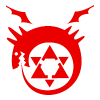why do strategy games prevent movement after taking an action? XCOM, Fire Emblem, Advance Wars, The Banner Saga, they all prevent the unit from moving after taking an action or all of their actions, w/e. Is there a GAME DESIGN reason for doing so, or is it merely convention?
Question Regarding UI Turn Sequence in TBS Games
why do strategy games prevent movement after taking an action? XCOM, Fire Emblem, Advance Wars, The Banner Saga, they all prevent the unit from moving after taking an action or all of their actions, w/e. Is there a GAME DESIGN reason for doing so, or is it merely convention?
Descent: Journeys in the Dark does not prevent this (you can move before, and after attacking, or even attack twice from two different places assuming you have some fatigue to spend!)
I would suspect this is to prevent kiting though, which could make ranged units overpowered:
- Attack, move back 10 squares.
- Chasing melee unit moves forward 10 squares
(Rinse and repeat).
By having the attack terminate the turn, you're forcing the archer to be in range, which in turn means the melee unit is likely to be in range.
XCOM does have some melee units, but more importantly, range and firing arcs (cover) plays into %accuracy, so this is also relevant. Basically, you're balancing things out for the other player by putting a drawback on where the attack was taken from.
In real life, it also makes sense, turn by turn tries to mimic real time to a degree. So the fast action, is the movement, and the slow action, is the firing sequence. When an opponent is firing at you, it's likely during the bulk of your action, which would be shooting, and shooting would occur from whichever position you were when you shot. If you could move after, it would be clunky to have enemies fire at "where you WERE before you moved" so its easier and simpler to just have you stop.
Hope this helps!
The first three X-COM games didn't put any restrictions on what you could do with your time units. You could move, fire, move, fire, turn, crouch, etc, as long as you had enough TUs remaining. The aliens would ALWAYS kite you (move until they could see you, fire, then move directly away from you so that you no longer knew where they were on your turn).
The two new XCOM games generate a much more tense situation because your choices are much less flexible, forcing you into making moves that are not as optimal as what you'd get in the old time unit system. The newer games feel like they are more focused on funneling the player through a curated experience, and it's easier to funnel a player through an experience if there are fewer possible moves they can make.
Great, thank you for explaining it. I had a suspicion that "kiting" was something that could be a problem if that was implemented, but I hadn't heard that exact term before or whether it was a widespread problem. This will make it easier to discuss the concept with my team members / game advisor.
willnationsdev - Godot Engine Contributor
It's much more player friendly. You click a unit, see the range (highlighted terrain) and instantly know what your options are (both movement and attack wise). If you were allowed to move after attack you would need to manually calculate all available options (move+attack+retreat, it's tricky to show on the interface). Plus you wound need to show some "this unit attacked but can still move marker" instead of graying out a unit that already attacked. A lot of mess for no gain :)
Stellar Monarch (4X, turn based, released): GDN forum topic - Twitter - Facebook - YouTube
It takes some getting used to in XCOM 2, trying to figure out which non-move abilities won't end your turn. I guess there's some subtle symbol to show you (that I never noticed but just looked up to see if it exists), and tends to be based on whether the ability is offensive or not, but it's felt more like trial and error as I expect an ability to end my turn and find myself surprised to have another action. I feel like getting whatever 2 actions I choose could work, but limiting that definitely adds tension to the combat decisions in a way that works.
It's much more player friendly. You click a unit, see the range (highlighted terrain) and instantly know what your options are (both movement and attack wise). If you were allowed to move after attack you would need to manually calculate all available options (move+attack+retreat, it's tricky to show on the interface). Plus you wound need to show some "this unit attacked but can still move marker" instead of graying out a unit that already attacked. A lot of mess for no gain
These games already have to indicate that you've taken an action without yet ending your turn. I don't think it would be any different if you could attack, then move.
I'm making a turn based strategy game where I plan to allow attacking then moving. I wonder if I'll find the same kiting problem in my game, and have to add extra restrictions to Attack+Move.
Radiant Verge is a Turn-Based Tactical RPG where your movement determines which abilities you can use.












